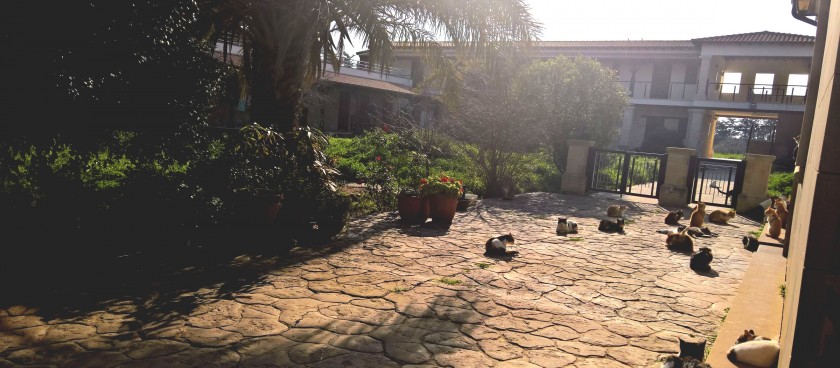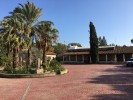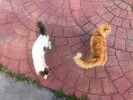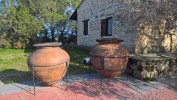- #CY29
- Edge of Akrotiri village, Akrotiri, Cyprus
- +35725952621
- Working hours*:
Mon-Fri 8:00-17:00 - * - opening and closing times as well as entrance prices, are subject to alterations without notice. Visitors are advised to check before visiting.
- 34.5994720, 32.9870620 Copy to clipboard Copy
-
#Monasteries
The retreat was built at the beginning of the 4th century and is famous for providing refuge to the cats that saved the island from venomous snakes. This is why the monastery was named after St. Nicholas – the cats’ protector.
Stefan Lusignan, a medieval historian, who published a book dedicated to Cyprus in 1580, suggested that Helena’s visit to the island played an important role in its unification with the Antioch and the appointing of Duke Kalokeros as the new Governor of Cyprus.
Allegedly, it was Kalokeros, who built the monastery of St. Nicholas on the outskirts of village Akrotiri at the order of Emperor Constantine. Having noticed Kalokeros’ dedication and skills, Helena ordered him to take care of the cats that she brought from Egypt and Asia Minor in order to kill the snakes that were harassing the island’s residents.
Kalokeros moved the cats into the monastery and left an allowance for the animals’ needs. The cats were fed the venomous snakes so they could better remember them and hunt them later. During the day the little hunters would scatter around the monastery and then come back together to the sound of the chiming bell – much to the amusement of the visitors, who would come to observe the snake-hunters.
The monks, who took care of the cats, received a special permission from Kalokeros to go fishing in a salt lake on St. Nicholas Day. They retained this privilege until the 16th century.
After visiting the island, Greek writer and Nobel laureate Giorgos Seferis had dedicated a poem to the monastery, titled “The Cats of St. Nicholas.”
The main church at the monastery, erected in the 14th century, looks almost exactly as it did when it was first built. It is a single-nave basilica with thick ochre-colored walls. The vault has a semi-cylindrical shape. It was built in the Franco-Byzantine style and is supported on the inside with transverse arches. The only natural light that enters the church comes through the only window in the apsis in the eastern part of the building. The southern part of the gallery that encircles the church has retained the arches that used to be part of the ancient church.
The church has three separate entrances. The most interesting one is the northern portal, which features decorative elements that are characteristic of the French period. There is a mosaic depicting St. Nicholas that hangs over the entrance. It was created by modern Cypriot painter George Kepolos. The ogive vault of the portal is decorated with choke stone, while the lower ends of the arches feature fragments of a sculpture of St. Peter and of St. Paul.
Historians say that the marble lintel is part of the original church. It features coats of arms of several noble dynasties, including the House of Lusignan.
The two-tiered wooden iconostasis is decorated with images of angels and peacocks as well as floral patterns. The walls in the western part of the nave feature fragments of the ancient building and have been left there on purpose for the public to see them.
In 1983 the monastery became all-women thanks to the arrival of sisters Helpida and Kasiani, who moved there from the monastery of Saint Georgios Alamanou. The two women were able to restore damaged buildings, erected new ones and planted gardens. As a result of their efforts, the monastery began to draw new pilgrims from around the world.
Meanwhile, cats continue to serve the island and hunt venomous snakes – much to the amusement of the tourists and local residents.



